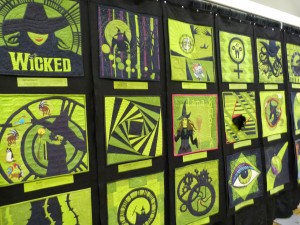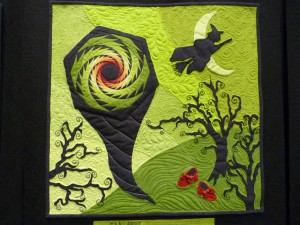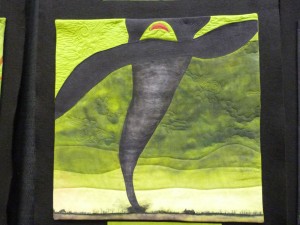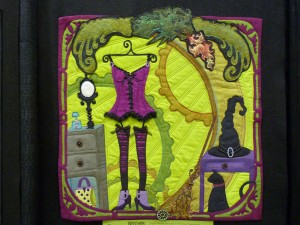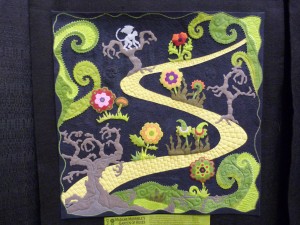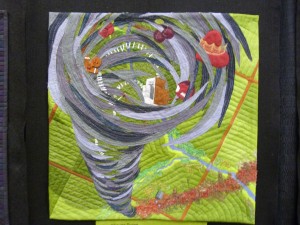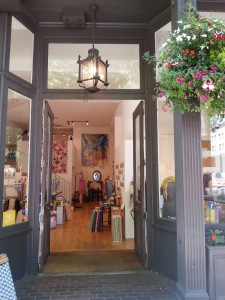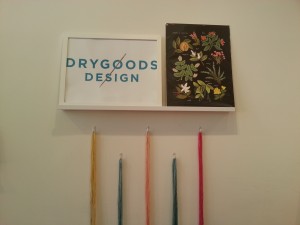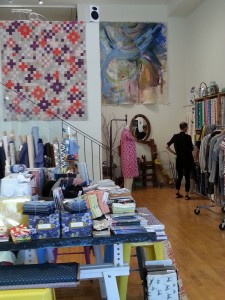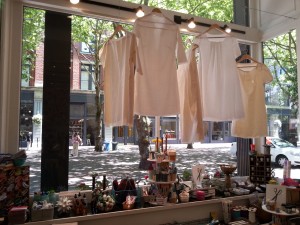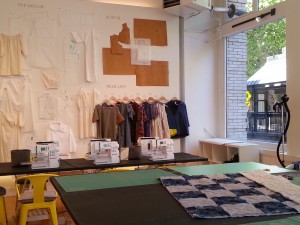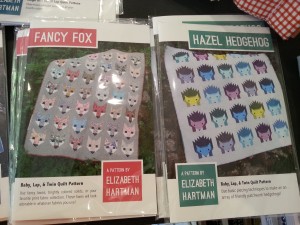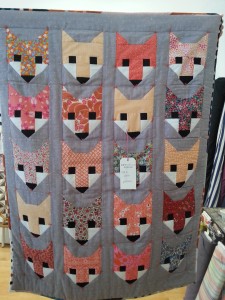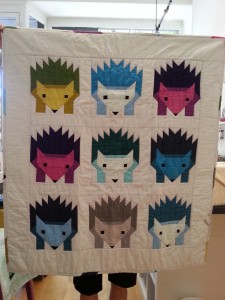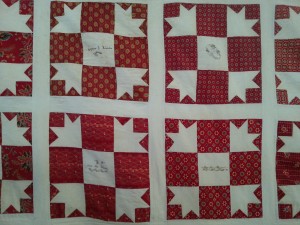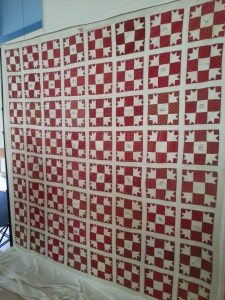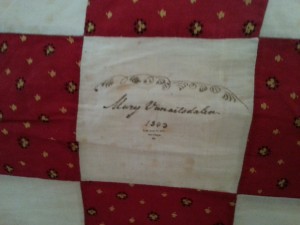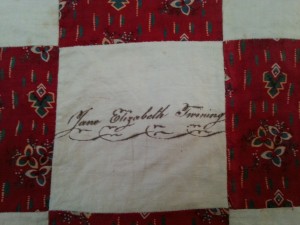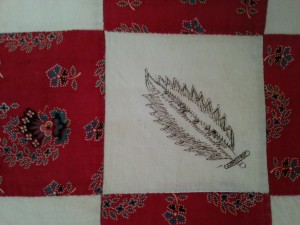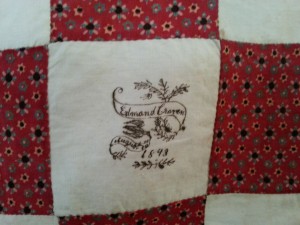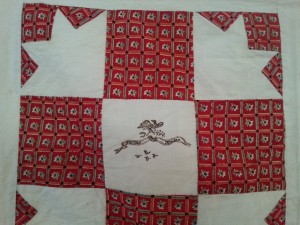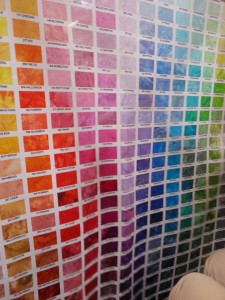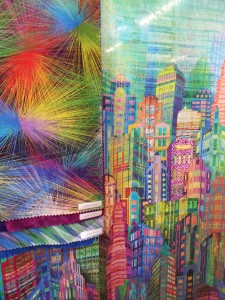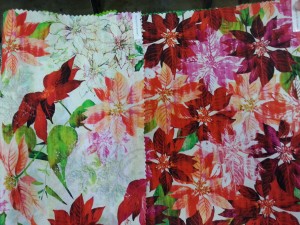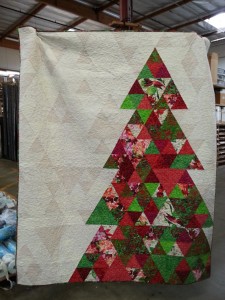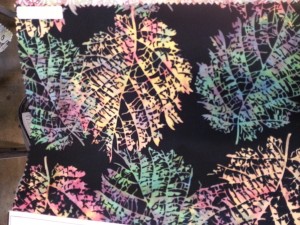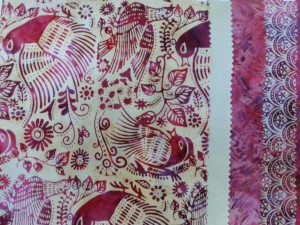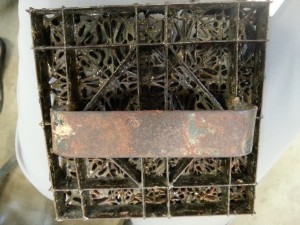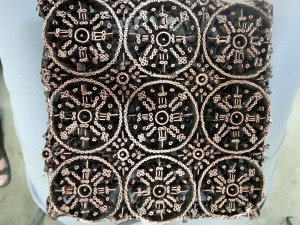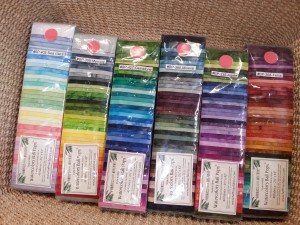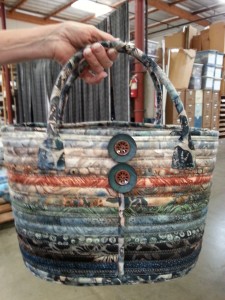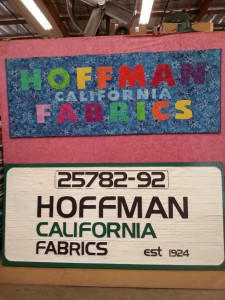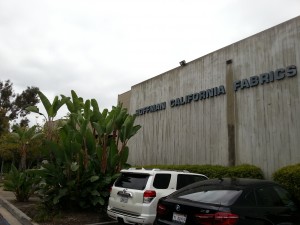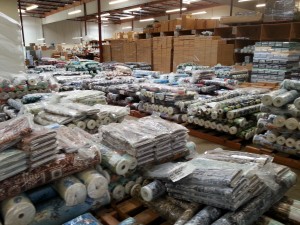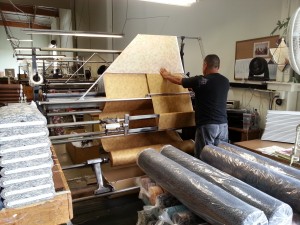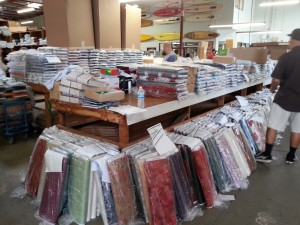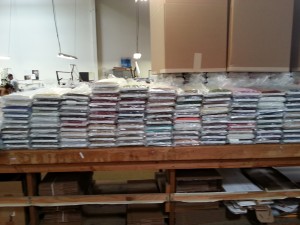The WICKED – Are You Wicked? quilt challenge was sponsored by Cherrywood Hand Dyed Fabrics. The challenge was to use Cherrywood “Wicked Greens” and black to make a 20″ square quilt using the theme WICKED. Most were influenced by the Broadway musical hit, but some expressed other interpretations of the word wicked. A total of 114 quilts were submitted. Of these, judges selected 27 to hang on Broadway for two months. All the quilts were displayed in a special exhibit at the Paducah show on a long wall and they looked spectacular.
The quilt on the right, It’s All About the Tornado, by Pat DuBois of Woodbury, MN, was the Viewers Choice. It was my favorite too. Pat knew immediately that she wanted a tornado for her challenge. “Whether you call it a tornado, a cyclone, or a twister…. it’s the most powerful and WICKED”. Techniques include paper-piecing, curved piecing, needle turn applique, fusing, embroidery and embellishment with crystals.
Wicked Sorcery, on the left, was made by Judy O’Connor Chaffee of Naperville, IL. Judy witnessed the devastating I-5 tornado in 1957 in Kansas City and still has a fear of tornadoes. In reading Wicked she was fascinated by Elphaba’s use of sorcery. “My quilt is a kind of dream world and answers the question: Could Elphaba and her flying monkeys also create tornadoes.” The monkeys are machine quilted in the green sky around the funnel of the tornado. On the right, Shelli Ricci of Apple Valley, MN takes a whimsical look inside the closet and under the dress of one “not-so-nice” girl in her quilt, Witches Britches. “I think it would be fun to wear a pretty purple corset and stockings. Maybe good girls have WICKED secrets hiding in their closets too!” Shelli embellished this gem of a quilt with Angelina fiber, crayons, rubber stamps, beads and bling.
Madame Morrible’s Garden of Hexes, by Robin Gausebeck from Rockford, IL won second place in the contest. This is a WICKED perversion of the traditional Grandmother’s Flower Garden, populated by hex-agonal flowers. Who knows what lies hidden in the garden guarded by a flying monkey beside the yellow brick road. The final tornado, Wicked Twist, is the creation of Linda Syverson-Guild from Bethesda, MD. The twister has gathered from classic tales involving WICKED attitudes. As well as Dorothy’s house, drawn into the funnel are Snow White’s apple, the Queen of Hears’crown, a spindle from Sleeping Beautry, cherries taken from Rapunzel and Rumpelstiltskin, and a gingerbread man from Hantzel and Gretel.
I’m sure this wonderful exhibit will travel extensively around the US in the next couple of years. If you have a chance to see it, I’m sure you will enjoy the creativity around this WICKED theme and be inspired.
